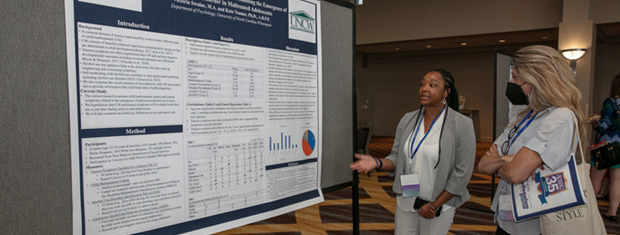




The APSAC Advisor is a peer reviewed quarterly news journal for professionals in the field of child abuse and neglect.
The APSAC Advisor provides succinct, data-based, practice-oriented articles that keep interdisciplinary professionals
informed of the latest developments in policy and practice the field of child maltreatment. It is designed to highlight
best practices in the field and publish original articles and current information about child maltreatment for professionals
from a variety of backgrounds including medicine, law, law enforcement, social work, child protective services, psychology,
public health and prevention in the U.S.
 If you wish to learn more about submitting an article to the Advisor, please click here.
If you wish to learn more about submitting an article to the Advisor, please click here.
This library contains Advisor issues dating back to the first issue in 1988. The most recent issue appears at the top.
Scroll down to select past issues by year and issue number. Once a publication appears in the box, you
can use the Enlarge button to open the document in a new window or tab (depending on how your browser is set up).
This will allow you to view the document with larger print.
To print a document, first use the Enlarge button to open the document in a new window or tab. Then use your browser's Print command.
To return here from a new tab, close the tab. To return from a new window, click your browser's Back button.
In the listing below, click on a year and issue number to see the articles in that publication.
2019 Number 2
Improper or unethical behavior by a high-level administrator can have negative effects throughout a child protective services agency. Leaders need to model absolute integrity in order to create an atmosphere of trust and confidence.
Governors as Policymakers: Child Welfare as an Election Issue
Governors can be major policy actors in child welfare. Typically, however, governors take a visible role in this area only in the aftermath of child tragedy. Proactive rather the reactive policymaking is preferable. This paper provides a descriptive analysis of the stated issue priorities of the 2018 candidates for governor. Attention to child welfare was rare. Analysis describes the ways in which candidates’ campaigns addressed these issues. Discussion of the findings argues for the importance of keeping issues of vulnerable children at the forefront of governors’ attention during and after campaigns. This includes particular attention to the long term negative effects of maltreatment and the existence of evidence supported interventions to prevent maltreatment and reduce its effects.
Book Review: Medical Evaluation of Child Sexual Abuse: A Practical Guide (4th Ed.)
Introduction to the Special Section
Introduction: How Should Child Welfare Respond to Substance Use in Pregnancy?
How Should We Respond to Pregnancy and Substance Use?
Substance use in pregnancy should not be treated as child abuse for many reasons. We have little doubt that both pregnancy and the use of substances are subjects worthy of attention by public health officials. Treating pregnancy and drug use as child abuse, however, is a serious mistake, because it drives pregnant women underground to avoid being reported, discourages honest communications if they remain above ground, turns control of healthcare decisions over to people without training in health care, including caseworkers and judges with the power to regulate pregnant women’s lives as a condition of keeping or regaining custody of their children, and opens the possibilities for almost boundless future restrictions that may be imposed on pregnant women.
To Protect and Provide for Children, Prenatal Substance Use Must be Considered Abuse
The use of alcohol and illicit drugs during pregnancy is harmful to the developing child. The impacts range from mild to truly devastating, and may impair a child across the lifespan. The post-natal environment into which the child is born also plays a role in either exacerbating or mitigating the impact. Prenatal exposure costs taxpayers enormous amounts of money, stresses public systems and drives up the costs of healthcare and education. Yet policy makers have struggled with appropriate responses to prenatal exposure. We argue that each state should amend its laws to include prenatal exposure in the definition of child abuse. Doing so provides the best opportunity to ensure that these children receive the services and protection they need.
Response to: How Should We Respond to Pregnancy and Substance Use?
Response to: To Protect and Provide for Children, Prenatal Substance Use Must be Considered Abuse
The Indian Child Welfare Act: A Brief Overview to Contextualize Current Controversies
The Indian Child Welfare Act as the “Gold Standard”
Congress intended the Indian Child Welfare Act of 1978 to put an end to the discriminatory practices of state governments that led to the wholesale removal of about one-third of all Indian children from their homes. By creating minimum standards for the removal of Indian children, the Act had the side effect of improving procedural due process for parents in all child welfare matters. State government resistance to the Act continues, however, and the full benefits of a solid child welfare system remain elusive to children, Indian and non-Indian, in many state child welfare systems.
The Indian Child Welfare Act: In the Best Interests of Children?
Congress passed the Indian Child Welfare Act (ICWA) in response to historic abuses by state child welfare and private agencies resulting in massive removals of Indian children from their parents and Indian communities. Congress enacted ICWA to further two goals: 1) to protect the best interests of Indian children; and 2) to promote the continued existence and integrity of Indian tribes and culture. Practitioners have implemented ICWA in ways that harm children while failing to further compelling interests in protecting Indian tribes. In such cases, ICWA, as applied, constitutes a violation of the equal protection and due process guarantees of the Fifth and Fourteenth Amendments to the U.S. Constitution. This article ends by suggesting modifications to ICWA and implementing regulations.
Response to: The Indian Child Welfare Act as the “Gold Standard”
Response to: The Indian Child Welfare Act: In the Best Interests of Children?
APSAC Advisor 31(2): Full Issue